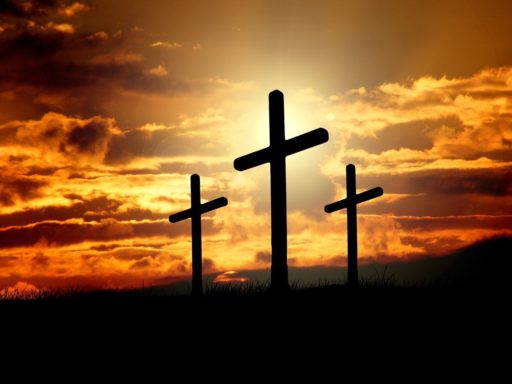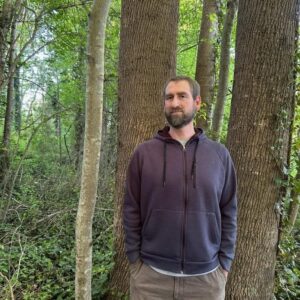In my experience, North America (north of the Rio Grande, anyway) is profoundly not Catholic. Even North American Catholics of Anglo descent (that would be me, more or less) have a bit of Protestant in them. But what this means for me—what it has meant for me since long before I became a Catholic or a Christian of any sort—is that I am sometimes haunted by a fantasy, an alternative version of the history of North America, particularly of the United States.
In this version, it is not the people of the British Isles who conquer most of North America and set up their institutions here, but those of France and Spain. This would be a Catholic North America. As the religion has done everywhere else it has spread, the Catholic Christianity that would have taken root here would have merged with and incorporated aspects of the native religious beliefs and practices. Just as the holy places of pagan Gaul and Britannia became the holy places of Catholic France and pre-Reformation Britain, so the holy places of Native Americans would have become the shrines and cathedrals of a Catholic America: a landscape of organic and deep-rooted sacredness, and a polity founded, I suppose, not upon life, liberty, and the pursuit of happiness, but perhaps en el nombre del Padre, del Hijo, y del Espíritu Santo: a nation under the protection of La Sainte Vierge, Mère de Dieu, Mère des Hommes.
It’s probably better as fantasy than as reality. My Jewish forebears would think so. And after all, this is not exactly what happened throughout most of Latin America. Still, I’m not the only American writer who has been fascinated by this alternative American history. Walt Whitman and William Carlos Williams come to mind. Willa Cather wrote maybe her two best novels, Death Comes for the Archbishop and Shadows on the Rock, about the real Catholic poles of North America: the desert Southwest and Quebec. Before her, Thoreau was fascinated by Quebec, especially by Catholicism, which he thought did a better job of blending with—rather than eradicating—Indian cultures, his greatest interest.
I’ve been reading Kirstin Valdez Quade’s debut novel, The Five Wounds, and I’ve been thinking… well, about some big things that the book leads me to think about. I’m not finished with it yet, so what follows are a few preliminary thoughts. And actually I’m looking forward to sitting with these thoughts for a little while as I finish the book, amplifying and modifying them in the next post.
One thing I think about is something Lawrence Durrell wrote: “I willingly admit,” he said, “to seeing characters almost as functions of a landscape.” I don’t know if the landscape of northern New Mexico is on display, exactly, in The Five Wounds. And yet it is vivid to me. I know exactly where this story is. It’s a story, set in a mountainous desert landscape, of a teen girl’s unexpected pregnancy and the violent, broken world into which her son is born. That’s one way of putting it, anyway. And that’s the Gospel Story, in the Gospel landscape.
If I’m thinking about an alternative history, a more fully Catholic version of America, it’s maybe because Valdez Quade’s novel is about a group of people who, yes, are culturally Catholic, but they are also modern disadvantaged Americans who are desperately trying to get their shit together despite broken families, horrific substance abuse, systemic poverty, unplanned teen pregnancies, and the backdrop of banal American popular culture. Is it a complete waste of time to wonder how different this scene might look had a different dominant culture prevailed?
I honestly don’t know. Here is a glimpse of maybe the most competent, mature character of the book—who is dying of cancer:
Sometimes during her lunch hour, Yolanda walks from the Capitol building to the cathedral, not to pray, but to sit in the bright, airy quiet. She refuses to look at La Conquistadora, the wooden statue of the Blessed Mother tucked high and snug in an opulent niche in her chapel to the left of the altar. The conquistadors brought her from Spain, hauled her around with them like a lucky charm as they invaded the peoples of the New World, and she served as a placid, unmoved witness to the violence they wrought. No wonder the Spaniards loved her so: O Conquistadora, Our Lady of the Rosary, Blessed Mother, Adoring Mother, Our Mother of Excuses and Turning a Blind Eye, Our Lady of Willful Ignorance and Boys Will Be Boys, Our Lady of Endless, Long-suffering Hope. In the nineties… the bishop renamed her Our Lady of Peace. But there’s never been peace in this land, not then and not now, not for her family and not for Yolanda.
How do you separate the culture from the Christianity in such thoughts? Render unto Caesar what is Caesar’s. He who lives by the sword dies by the sword. The Spaniards came and brought their religion with them, however they understood it, however they could or could not live it.
So another question I put myself reading the book: Is this a Catholic novel? Maybe I should start by asking if it is a novel at all.
This novel grew from a short story of the same name. The novel moves from Holy Week to the next Lent. The short story spans just a few days, culminating on Good Friday. An expanded version of this story makes up the first section of the novel, which is followed by over three hundred pages divided into one very large section, called “Ordinary Time” (mostly that’s the Catholic liturgical year between Pentecost and Advent, summer and autumn, with another chunk in midwinter), and a very short concluding section called “Lent.”
That structure is interesting, but I will wait to comment more upon it. As for the short story that grew into the first part of the novel, it is essentially a passion play—the reenactment of Christ’s crucifixion—such as can be found in most anciently Christian cultures. I’m most familiar with the medieval English mystery and morality and miracle and passion plays, the dramas put on by townspeople showing the entire Christian view of life and the cosmos.
But this stuff is even still to be found in literature. The literature of Christian civilization has for two millennia been seeking and finding new ways to tell the Gospel Story. You can see it in the Arthur Story and other fantasy fiction. Even a great modernist poet like David Jones has little else for material than the Mass, or the sacrifice it is understood to recreate.
In Valdez Quade’s short story, as in the beginning part of the novel, a (so far) failed man, Amadeo, plays the part of Jesus and actually receives the wounds—two of them at least—in his hands. The question I will take up next time—and I think this is the question whether we are asking if The Five Wounds is Catholic or if it is a novel—is what happens after that.
Jonathan Geltner lives in Ann Arbor MI with his wife and two sons. His translation of Paul Claudel’s Five Great Odes is available from Angelico Press and a novel, Absolute Music, is forthcoming from Slant. He writes more about the meeting of fantasy and fiction with theology, philosophy, music, and the sense of place at betweentwomaps.com





